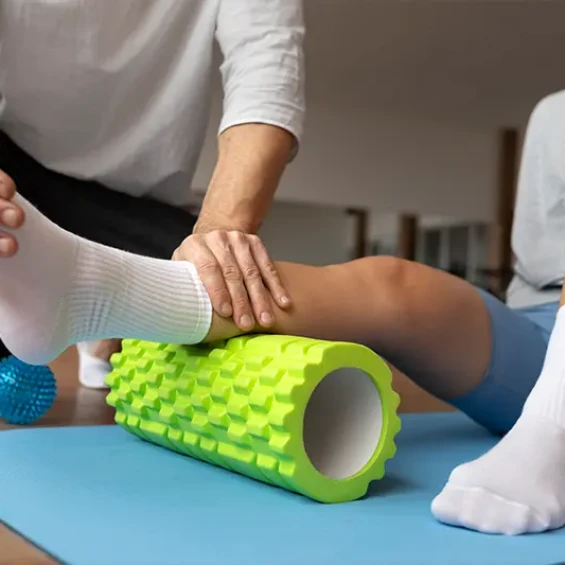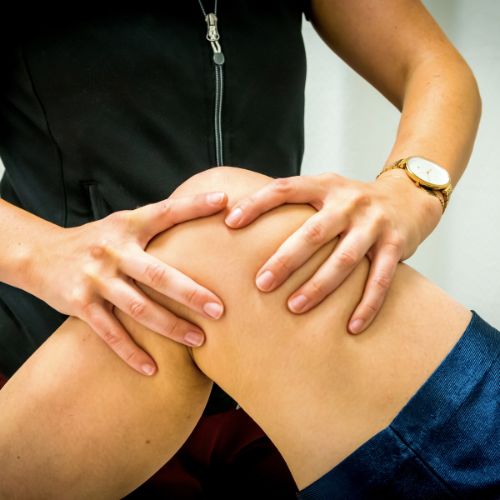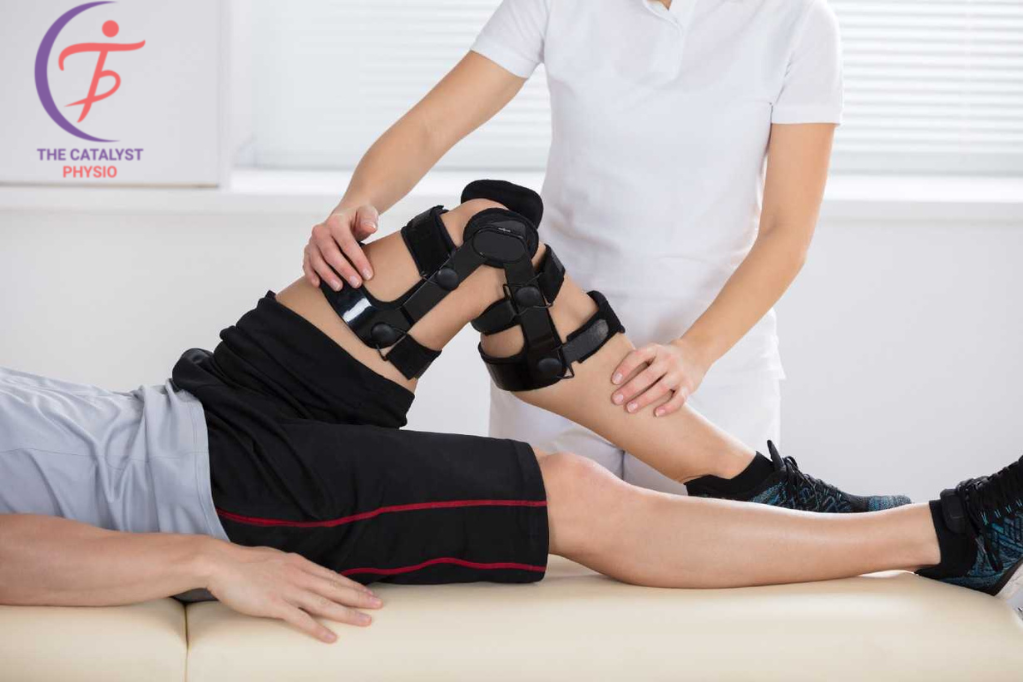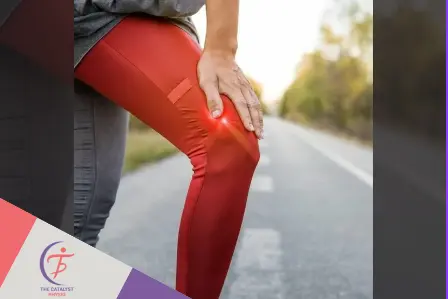Introduction to Knee Strengthening Exercises
Knee strengthening exercises are an essential component of any fitness routine, especially for those recovering from injuries or looking to prevent them. These exercises target the muscles around the knee joint, helping to improve stability, mobility, and overall function.
Importance of Knee Strength
Strong knees are crucial for maintaining an active lifestyle and preventing injuries, particularly as we age. Weak knees can lead to various issues such as pain, instability, and reduced range of motion. By incorporating Knee strengthening exercises into your workout regimen, you can build strength, resilience, and confidence in your knees.
Precautions Before Starting Knee Strengthening Exercises
Before embarking on a Knee strengthening program, it’s essential to consult with a healthcare professional, especially if you have any existing knee issues or medical conditions. Additionally, warming up properly and using proper form during exercises can help prevent injuries and maximize the benefits of your workout.

Top 10 Knee Strengthening Exercises
Squats
Squats are a fundamental lower body exercise that targets the quadriceps, hamstrings, and glutes.
Traditional Squats
To perform traditional squats, stand with your feet shoulder-width apart, keeping your back straight and chest up. Slowly lower your body by bending your knees and pushing your hips back, as if you’re sitting in a chair. Keep your knees aligned with your toes and lower down until your thighs are parallel to the ground. Then, push through your heels to return to the starting position.
Wall Squats
Wall squats, a form of knee strengthening exercise, offer added stability, particularly beneficial for beginners or individuals with knee concerns. Start by positioning your back against a wall, then gradually lower into a squat until your thighs align parallel to the ground. Maintain this pose briefly, emphasizing the engagement of your knee muscles, before gently rising back to a standing position, focusing on pushing through your heels.
Lunges
Lunges target the quadriceps, hamstrings, and glutes while also improving balance and coordination.
Forward Lunges
To incorporate forward lunges into your knee strengthening routine, begin by standing upright with your feet hip-width apart. Step forward with your right foot, lowering your body until both knees form a 90-degree angle. Ensure alignment by keeping your front knee directly over your ankle, while your back knee hovers just above the ground. Engage your front heel to push back to the starting position, then alternate sides for a comprehensive knee-strengthening exercise.
Side Lunges
Side lunges are an effective knee strengthening variation that targets the inner and outer thighs, along with engaging the quadriceps and glutes. To perform, begin in a standing position with feet together, then take a wide step to the right, bending the right knee while maintaining the left leg straight. Lower the body until the right thigh is parallel to the ground, then push through the right heel to return to the starting position. Repeat the motion on the opposite side to promote comprehensive knee strengthening.
Step-Ups
Step-ups are an effective exercise for targeting the quadriceps, hamstrings, and glutes while also improving balance and coordination.
Basic Step-Ups
To perform basic step-ups, stand in front of a sturdy bench or step with your feet hip-width apart. Step onto the bench with your right foot, ensuring that your entire foot is firmly planted. Push through your right heel to lift your body onto the bench, then step down with your left foot. Alternate legs with each repetition.
Elevated Step-Ups
Elevated step-ups increase the intensity of the exercise by using a higher platform. Follow the same technique as basic step-ups but use a taller bench or step to challenge your muscles further.
Leg Press
The leg press is a machine-based exercise that primarily targets the quadriceps, hamstrings, and glutes.
Leg Extensions
Leg extensions isolate the quadriceps muscles, making them a great exercise for strengthening the front of the thigh.
Hamstring Curls
Hamstring curls target the hamstrings, helping to improve strength and stability in the back of the thigh.
Calf Raises
Calf raises target the calf muscles, which play a crucial role in knee stability and function.
Glute Bridges
Glute bridges target the glute muscles, which are essential for hip and knee stability.
Leg Raises
Leg raises target the hip flexors and lower abdominals, helping to improve overall core strength and stability.
Quad Sets
Quad sets are a simple yet effective exercise for strengthening the quadriceps muscles.
Proper Technique and Form for Each Exercise
When performing knee strengthening exercises, it’s essential to maintain proper technique and form to avoid injury and maximize results. Start with light weights or resistance and gradually increase as your strength improves. Focus on controlled movements and avoid locking your joints or using momentum to complete the exercises.

Tips for Beginners
If you’re new to knee strengthening exercises, start slowly and gradually increase the intensity and duration of your workouts. Listen to your body and stop if you experience any pain or discomfort. Incorporating a variety of exercises into your routine can help prevent boredom and ensure balanced muscle development.
Progression and Variation
As you become stronger and more comfortable with knee strengthening exercises, consider progressing to more advanced variations or increasing the intensity by adding resistance or weight. Incorporating variations such as single-leg exercises or unstable surfaces can further challenge your muscles and improve balance and coordination.
Frequency and Duration of Exercises
To see results from knee strengthening exercises, aim to perform them at least two to three times per week, allowing for adequate rest and recovery between sessions. Start with a manageable number of repetitions and sets, gradually increasing as your strength improves. Listen to your body and adjust the frequency and duration of your workouts accordingly.
Benefits of Knee Strengthening Exercises
The benefits of knee strengthening exercises extend beyond just physical strength. In addition to improving muscle tone and definition, these exercises can help alleviate knee pain, reduce the risk of injury, and enhance overall quality of life. By incorporating knee-strengthening exercises into your regular workout routine, you can enjoy improved mobility, stability, and confidence in your knees.

Conclusion
Knee strengthening exercises are a vital component of any fitness regimen, offering a multitude of benefits for both physical health and overall well-being. By incorporating a variety of exercises targeting the muscles around the knee joint, individuals can improve strength, stability, and mobility while reducing the risk of injury. Whether you’re recovering from an injury, looking to prevent future issues, or simply striving for better knee health, incorporating these exercises into your routine can help you achieve your goals and lead a more active, pain-free lifestyle.
FAQ’s
- How do I make my knees stronger?
- To make your knees stronger, incorporate exercises like squats, lunges, and leg presses into your workout routine. Focus on proper form and gradually increase the intensity as your strength improves. Additionally, include exercises that target the muscles around the knees, such as hamstring curls and calf raises. Lastly, don’t forget to give your knees proper rest and recovery time between workouts to prevent overuse injuries.
- Can weak knees be strengthened?
- Yes, weak knees can be strengthened through targeted exercises that focus on building muscle around the knee joint. Incorporating activities such as squats, lunges, and leg presses can help improve strength and stability. It’s essential to start gradually and progress slowly to avoid overexertion or injury. Consistency is key, so regular exercise and proper rest are crucial for seeing results. Consulting with a healthcare professional or physiotherapist can provide personalized guidance for strengthening weak knees.
- What organ can cause upper back pain?
- The kidneys can cause upper back pain, particularly if there are issues such as kidney stones or infections. When kidney problems arise, they can lead to referred pain in the upper back region. Other symptoms may include urinary changes, fever, or nausea. Seeking medical attention is crucial for accurate diagnosis and treatment.
- How can I strengthen my knee cartilage?
- To strengthen knee cartilage:
- Engage in low-impact exercises like swimming or cycling.
- Incorporate foods rich in collagen, such as bone broth or gelatin.
- Maintain a healthy weight to reduce stress on the knees.
- Perform exercises that target the muscles around the knee for added support.
- Consult with a healthcare professional for personalized advice and treatment options.
- To strengthen knee cartilage:
- How long does it take to recover from back pain?
- The recovery time for back pain depends on the cause and severity of the pain. With proper rest, treatment, and preventive measures, many people experience relief within a few days to weeks.
Dr. Priyanka Bharadwaj (Physiotherapist)
CB Home Physiotherapist: Dr Priyanka Bharadwaj is one of the best female physical therapy experts in Khanpur, Delhi. She offers Physiotherapy at home in Khanpur and nearby areas. With a well-established practice for home physiotherapy, she is an expert in the treatment of conditions such as Back Pain, Neck Pain, Knee Pain, Sciatica, Cervical Spondylosis, Disc Bulge, Frozen Shoulder, Arthritis, Osteoporosis, Muscle Weakness, Balancing Problems… Post-surgery rehab for Shoulder, Knee Surgery / TKR, Hip Replacement … and neurological issues like Stroke, Nerve Injuries, Bell palsy, Multiple Sclerosis, and Parkinson’s. Dr. Priyanka Bharadwaj has an overall experience of 2 Years in various hospitals & clinics.
Her main focus/expertise is in the field of General Physiotherapy but she has trained & worked across multiple specialties like General Physiotherapy, Pediatric Physiotherapy, Geriatric Physiotherapy, Vestibular Rehabilitation, Neurological Physiotherapy, Musculoskeletal Physiotherapy, Cardiovascular Physiotherapy, Pulmonary Physiotherapy, Sports Physiotherapy, Pre and Post Surgery, Rehabilitation, Dry Needling. She has experience working with a wide range of patients from children of small age to senior patients. Dr. Priyanka Bharadwaj is very compassionate and dedicated to patient well-being.
Qualification
Bachelor Of Physiotherapy
Manav Rachna International Institute of Research and Studies
Overall Experience in Years – 2
Connect with Us Online
Social Media:
Stay updated on our services, health tips, and community events by following us on Facebook. Connect with us, and join the conversation on how home care physiotherapy can contribute to a healthier lifestyle.
Online Form:
You can also fill out our online contact form on our website at The Catalyst Physio. Provide us with your details and inquiries, and we will get back to you promptly.
Your Health, Our Priority
At The Catalyst Physio, we prioritize your well-being. Whether you’re recovering from surgery, managing a chronic condition, or seeking preventive care, our dedicated team is committed to providing you with personalized, convenient, and transformative home care physiotherapy.
Contact us today, and let’s embark on the journey to optimal health together. Your well-being is our priority, and we look forward to being part of your path to recovery and sustained wellness.


